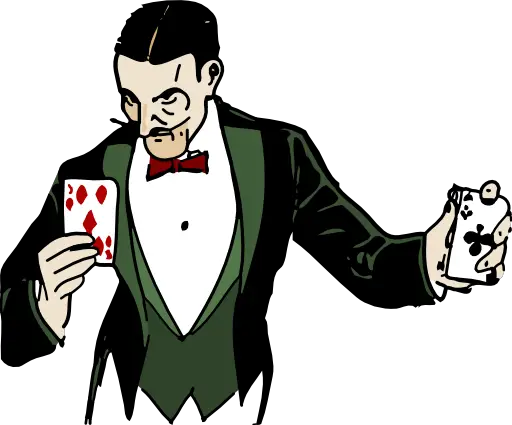Support our educational content for free when you purchase through links on our site. Learn more
Unlock the Secrets: 10 Amazing Tips for Learning a Magic Trick 🪄
Have you ever watched a magician perform and thought, “I wish I could do that!”? Well, you’re in luck! In this article, we’ll unveil 10 incredible tips that will set you on the path to mastering magic tricks like a pro. Whether you’re a complete novice or looking to polish your skills, we’ve got you covered. From the essential tools you need to the importance of storytelling in your performances, we’ll explore every aspect of learning
Did you know that the art of magic dates back to ancient Egypt, where magicians would perform for pharaohs? Today, magic has evolved into a captivating blend of psychology, skill, and showmanship. So, are you ready to dive into the enchanting world of magic? Let’s get started!
Key Takeaways
- Start Simple: Begin with easy tricks to build confidence and foundational skills.
- Practice Regularly: Consistency is key to mastering any magic trick.
- Engage Your Audience: Storytelling enhances the magic experience and captivates viewers.
- Utilize Online Resources: Platforms like YouTube and Ellusionist offer valuable tutorials and courses.
- Create Your Own Tricks: Don’t be afraid to innovate and add your personal flair to classic tricks.
Ready to take the plunge into the world of magic? Check out our recommended magic kits and tools to kickstart your journey! 🃏✨
Table of Contents
- Quick Tips and Facts
- The Fascinating World of Magic: A Brief History
- Top 10 Magic Tricks You Can Learn Today
- Essential Tools for Learning Magic Tricks
- Step-by-Step Guide: How to Master a Magic Trick
- Online Resources for Learning Magic Tricks
- The Importance of Practice and Performance
- Tips for Creating Your Own Magic Tricks
- Common Mistakes to Avoid When Learning Magic
- How to Perform Magic Tricks with Confidence
- Engaging Your Audience: The Art of Storytelling in Magic
- BE FIRST TO KNOW: Subscribe for Magic Tips
- Your Cart • 0 items
- Conclusion
- Recommended Links
- FAQ
- Reference Links
Quick Tips and Facts
Learning magic tricks can be an exhilarating journey! Here are some quick tips to get you started on your magical adventure:
- Start Simple: Begin with easy tricks like card manipulations or coin vanishes. Mastering the basics builds a strong foundation. 🃏
- Practice Regularly: Consistency is key! Set aside time each day to practice. Even 15 minutes can make a big difference. ⏰
- Record Yourself: Watching your performances can help you identify areas for improvement. Plus, it’s fun to see your progress! 🎥
- Engage Your Audience: Magic is as much about storytelling as it is about tricks. Keep your audience captivated with a good narrative. 📖
- Join a Community: Connect with fellow magicians online or in local clubs. Sharing tips and tricks can enhance your learning experience! 🌐
The Fascinating World of Magic: A Brief History
Magic has captivated audiences for centuries! From ancient Egypt to modern-day street performances, the art of illusion has evolved dramatically.
Key Milestones in Magic History
| Year | Event |
|---|---|
| 2700 BC | Earliest recorded magic trick in ancient Egypt. |
| 19th Century | The rise of stage magic with performers like Harry Houdini. |
| 20th Century | The introduction of television magic, bringing illusions to homes worldwide. |
| Present Day | The internet allows for global sharing of magic tricks and tutorials. |
Magic’s rich history is not just about tricks; it reflects cultural shifts and technological advancements. For a deeper dive into card tricks, check out our article on 15 Mind-Blowing Card Tricks You Can Master in 2025!.
Top 10 Magic Tricks You Can Learn Today
Ready to dazzle your friends? Here’s a list of 10 magic tricks that are perfect for beginners:
- The Disappearing Coin: A classic that never fails to impress! 🪙
- The Card Prediction: Make a spectator’s chosen card appear in an unexpected place! 🃏
- The Floating Ring: Use a simple thread to make a ring float mysteriously. 💍
- The Mind-Reading Trick: Guess a number someone is thinking of! 🧠
- The Vanishing Handkerchief: Make a handkerchief disappear in a flash! 🕊️
- The Rubber Band Trick: Create the illusion of a rubber band jumping from one hand to another. 🔗
- The Magic Knot: Tie a knot in a rope without letting go! 🪢
- The Card Through the Table: Make a card penetrate through a solid table! 🃏
- The Magic Pencil: Balance a pencil on your finger and make it appear to defy gravity. ✏️
- The Card Switch: Switch one card for another right under the spectator’s nose! 🎩
These tricks are not only fun to learn but also serve as great conversation starters!
Essential Tools for Learning Magic Tricks
To perform magic tricks effectively, you’ll need some essential tools. Here’s a breakdown of must-have items:
| Tool | Purpose | Recommended Brands |
|---|---|---|
| Deck of Cards | For card tricks | Bicycle, Tally-Ho |
| Coins | For coin tricks | Standard US coins |
| Rope | For rope tricks | Any sturdy rope |
| Magic Kits | Comprehensive learning | Ellusionist, Magic Makers |
| Props | Various illusions | Customizable based on tricks |
Recommended Magic Kits
- Ellusionist Beginner Magic Kit: A great starter kit that includes basic tricks and tutorials. Check it out on Ellusionist.
- Magic Makers Magic Kit: Offers a wide range of tricks for beginners and includes instructional videos. Explore Magic Makers.
Step-by-Step Guide: How to Master a Magic Trick
Mastering a magic trick involves several steps:
1. Choose Your Trick
- Select a trick that excites you! Start with something simple.
2. Learn the Method
- Watch tutorials or read books to understand the mechanics behind the trick. Resources like Ellusionist offer great insights.
3. Practice, Practice, Practice!
- Rehearse the trick until you can perform it smoothly. Use a mirror or record yourself to refine your technique.
4. Perform for Friends
- Start with a small audience. Gather feedback and adjust your performance accordingly.
5. Add Your Personal Touch
- Make the trick your own by adding storytelling elements or unique flair.
Online Resources for Learning Magic Tricks
The internet is a treasure trove of resources for aspiring magicians! Here are some top platforms:
| Resource | Description |
|---|---|
| YouTube | A vast array of tutorials from professional magicians. |
| Ellusionist | Offers courses and kits for all skill levels. |
| Magic Café | A forum for magicians to discuss tricks and techniques. |
| Subreddits like r/magic provide community support and advice. |
Recommended Online Courses
- MasterClass with Penn & Teller: Learn from the legends themselves! Check it out here.
- Udemy Magic Courses: Various courses tailored to different skill levels. Explore Udemy.
The Importance of Practice and Performance
Practice makes perfect! The more you practice, the more confident you’ll become. Here are some tips:
- Set Goals: Aim to master a new trick each week. 🎯
- Record Your Progress: Watching your performances can highlight areas for improvement. 📹
- Perform Regularly: The best way to learn is by doing! Find opportunities to showcase your skills.
Tips for Creating Your Own Magic Tricks
Feeling creative? Here’s how to design your own magic tricks:
- Understand the Basics: Know the principles of magic, such as misdirection and sleight of hand.
- Experiment: Combine different techniques to create something unique.
- Test Your Trick: Perform it for friends and gather feedback.
- Refine and Perfect: Adjust based on audience reactions.
Common Mistakes to Avoid When Learning Magic
Even seasoned magicians make mistakes! Here are some common pitfalls to avoid:
- Skipping the Basics: Don’t rush into complex tricks without mastering the fundamentals. ❌
- Neglecting Practice: Inconsistent practice leads to shaky performances. ❌
- Ignoring Audience Engagement: Magic is about connection; don’t forget to engage your audience! ❌
How to Perform Magic Tricks with Confidence
Confidence is key in magic! Here are some strategies to boost your performance:
- Know Your Material: The more familiar you are with your trick, the more confident you’ll feel.
- Practice in Front of a Mirror: This helps you see what your audience sees.
- Visualize Success: Picture yourself performing flawlessly. It works wonders! 🌟
Engaging Your Audience: The Art of Storytelling in Magic
Magic isn’t just about the trick; it’s about the experience! Here’s how to weave storytelling into your performance:
- Set the Scene: Create a narrative that draws your audience in.
- Use Humor: Lighten the mood with jokes or funny anecdotes. 😂
- Build Suspense: Keep your audience guessing until the big reveal!
Remember, a great story can make even the simplest trick unforgettable!
BE FIRST TO KNOW: Subscribe for Magic Tips
Want to stay updated on the latest magic tricks and tips? Subscribe to our newsletter for exclusive content and offers! 🎉
Your Cart • 0 items
Ready to dive into the world of magic? Check out our selection of magic kits and tools to get started!
Conclusion
Learning magic tricks is a thrilling journey that combines creativity, practice, and performance. Whether you’re looking to impress friends or simply enjoy a new hobby, there’s a world of magic waiting for you. Remember to start with the basics, practice regularly, and engage your audience with captivating stories.
Recommended Links
FAQ
Q: How long does it take to learn a magic trick?
A: It varies! Some tricks can be learned in a few hours, while others may take weeks of practice.
Q: Do I need special equipment to perform magic?
A: Not necessarily! Many tricks can be performed with everyday items.
Q: Can anyone learn magic?
A: Absolutely! With dedication and practice, anyone can become a magician.
Reference Links
Conclusion
Embarking on the journey of learning magic tricks is not just about mastering illusions; it’s about creating unforgettable moments and connections with your audience. Throughout this article, we’ve explored the essentials of getting started, from the foundational tricks to the tools you’ll need.
Product Review Summary
If you’re considering investing in a magic kit, options like the Ellusionist Beginner Magic Kit and Magic Makers Magic Kit stand out. Here’s a quick recap of their positives and negatives:
| Product | Positives | Negatives |
|---|---|---|
| Ellusionist Beginner Magic Kit | Comprehensive tutorials, great for all skill levels, money-back guarantee. | Some tricks may require more practice than indicated. |
| Magic Makers Magic Kit | Variety of tricks, instructional videos included. | May not be suitable for advanced magicians looking for complex tricks. |
Recommendation: We confidently recommend starting with the Ellusionist Beginner Magic Kit for its thorough instructional support and quality tricks. It’s a fantastic way to dive into the world of magic!
Now that you’re equipped with the knowledge and resources, it’s time to unleash your inner magician! Remember, the key to success is practice, creativity, and a sprinkle of showmanship. 🎩✨
Recommended Links
- Ellusionist Beginner Magic Kit: Shop on Ellusionist
- Magic Makers Magic Kit: Shop on Magic Makers
- Magic Books:
FAQ
How can I learn simple magic tricks for beginners?
Simple Learning Methods
To learn simple magic tricks, start with online tutorials, books, or beginner magic kits. Websites like Ellusionist and YouTube offer a plethora of resources. Focus on tricks that require minimal props, such as card tricks or coin vanishes. Regular practice is essential to build confidence and skill.
Read more about “Mind-Bending Tricks for Beginners: 10 Amazing Illusions to Try! 🪄 …”
What are the most impressive magic tricks to learn for a party?
Party-Worthy Tricks
Impressive tricks for parties include:
- The Card Prediction: A classic that leaves audiences amazed.
- The Floating Ring: A visually stunning illusion.
- Mind-Reading Tricks: Engage your audience with psychological tricks that seem impossible.
These tricks often require practice but can be learned with dedication.
Read more about “What is the Easiest Magic Trick with Cards? 10 Mind-Blowing Tricks! 🎩 …”
Can I learn magic tricks online or do I need a teacher?
Online Learning vs. In-Person Instruction
You can absolutely learn magic tricks online! Many resources, including video tutorials and online courses, provide excellent instruction. However, having a mentor can offer personalized feedback and insights. Consider joining magic forums or local clubs for additional support.
What are the basic techniques and principles of magic tricks?
Fundamental Techniques
Basic techniques include:
- Sleight of Hand: Mastering hand movements to manipulate objects without detection.
- Misdirection: Diverting the audience’s attention away from the method.
- Presentation Skills: Engaging storytelling and performance to enhance the impact of the trick.
Read more about “15 Mind-Blowing Card Tricks You Can Master in 2025! 🃏”
How long does it take to master a complex magic trick?
Timeframe for Mastery
Mastering a complex magic trick can take anywhere from a few weeks to several months, depending on the trick’s difficulty and your practice routine. Consistent practice and performance will accelerate your learning curve.
Read more about “Mind Trick with Numbers: 10 Mind-Bending Tricks to Amaze! 🎩 …”
What are some easy magic tricks to learn with cards?
Easy Card Tricks
Some easy card tricks include:
- The Self-Working Card Trick: Requires minimal skill and is great for beginners.
- The Card Force: A technique to make a spectator choose a specific card without them realizing it.
- The Color Change: A visually appealing trick that can be learned quickly.
Read more about “200 Mind Trick Questions That Will Challenge Your Brain 🧠 …”
Can I create my own original magic tricks or should I stick to classics?
Original vs. Classic Tricks
Absolutely, you can create your own magic tricks! Many magicians start with classic tricks and then innovate by adding personal touches or combining techniques. Creativity is a significant part of magic, so don’t hesitate to experiment!
What are some common mistakes to avoid when performing magic tricks for an audience?
Mistakes to Avoid
Common mistakes include:
- Rushing Through Tricks: Take your time to build suspense.
- Neglecting Audience Engagement: Always connect with your audience through eye contact and storytelling.
- Overlooking Practice: Inadequate practice can lead to mistakes during performance.
For more insights on where to learn magic online, check out this Reddit discussion for community recommendations and resources.
Read more about “Master 10 Amazing Magic Tricks: How to Do Magic Tricks Like a Pro! 🎩 …”








